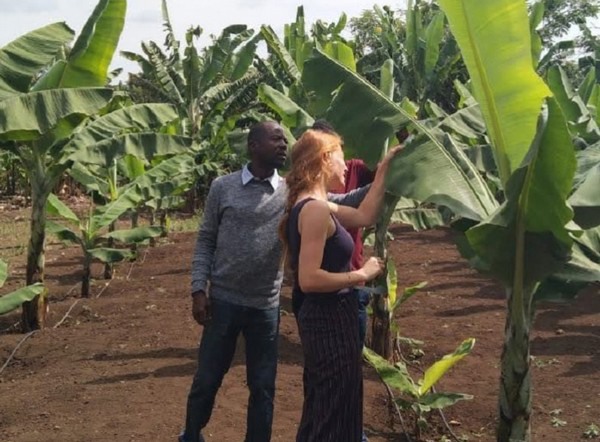Whether you like your bananas slightly green or spotted, they are mostly grown in the tropics and subtropics where plants require a warm, humid climate to thrive. This is how they produce the yield that feeds the world. However, due to changing rainfall patterns and rising temperatures, bananas along with other plants suffer more and more from drought stress – a shortage of water in the root of the plant, leading to reduced harvests.
A study published this month by scientists at the IAEA and the Food and Agriculture Organization of the United Nations (FAO) as well as colleagues from Austrian and Belgian universities, highlights approaches developed using nuclear techniques for spotting and assessing drought stress in banana plants in Arusha, Tanzania.
“The aim of this research was to shed some light onto this underexplored tropical perennial crop,” said Gerd Dercon, Head of the Soil and Water Management and Crop Nutrition Laboratory at the Joint FAO/IAEA Centre of Nuclear Techniques in Food and Agriculture. “With perennial crops, like bananas, that grow over several years, the use of the stable isotope techniques has not been sufficiently and properly developed, making this study one of the first to provide practical tools, even for farmers, not only for scientists.”
 Scientists discussed sampling technology with local partners in Tanzania. (Photo: S. Ramadhani)
Scientists discussed sampling technology with local partners in Tanzania. (Photo: S. Ramadhani)
The scientists explored the use of stable carbon isotopes (see the Science box) and leaf temperature as potential indicators for drought stress in banana plants. Research on other plants has shown that stable carbon isotopes and leaf temperature can be used to measure drought stress, but neither technique had been used for banana plants. Banana is an under researched crop for reasons including the complexity of its large size, long growth period, heterogenous growth pattern in which all plants grow differently even if they have the same genes, and a vegetative mode of reproduction. Currently, there are no practical methods to detect drought stress in banana in the field.
However, the study found that both stable carbon isotopes and leaf temperature were highly sensitive indicators for drought stress in banana, and based on these results researchers have developed banana-tailored methods that are low-cost and therefore applicable under field conditions.
“The methods we developed can be used to test levels of drought stress and to compare different water management strategies,” said Mathilde Vantyghem, IAEA/FAO PhD researcher and lead author of the study. “With such methods, local research institutes can do quick testing and eventually develop guidance for farmers to cope with drought stress.”
The study is part of an ongoing project funded by the Belgian government through the IAEA Peaceful Uses Initiative (PUI). In 2022 its focus will be on scaling these methods on the slopes of Mount Kilimanjaro to identify early signs of drought stress and safeguarding action.
For more information: iaea.org
